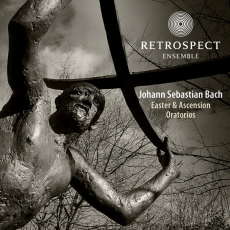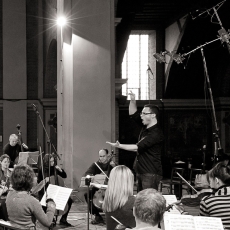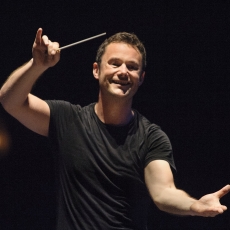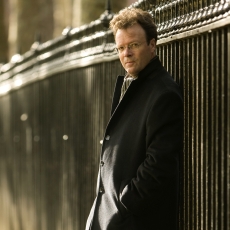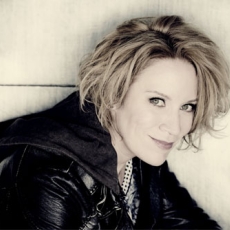Retrospect Ensemble - Bach Oratorios - Fanfare
Bach is not the first name that comes to mind in conjunction with the oratorio. Handel wrote oratorios; Bach wrote cantatas. But he also wrote three oratorios that have survived, all quite different from one another, and none that quite conform to our current understanding of the oratorio form. The longest and most familiar of the three, the Christmas Oratorio, is actually not a unified piece, but a series of six cantatas, each of which was originally intended to be performed on a separate day. The other two, conveniently paired on this recording, are shorter than some of Bach's longer cantatas, and one, the Ascension Oratorio, was mistakenly identified as a cantata by the compilers of the original Bach catalog. In fact, it's the Easter Oratorio that more closely resembles a cantata, except that it has no chorales. Nor does it have, like the Ascension Oratorio and the Christmas Oratorio, a Gospel narrative sung by an Evangelist. What all three oratorios have in common is that they incorporate parody movements derived from older sources, and all three are festively scored with drums and trumpets.
Linn has given us a roster of the Retrospect Ensemble's participants in the present recording but doesn't tell us much about the ensemble other than that its artistic director, Matthew Halls, an educator as well as a conductor, is active in its young artist program. A photo of the ensemble in action suggests that its membership is, indeed, youthful, though I do spot a few familiar names sprinkled among its ranks: trumpeter Crispian Steele-Perkins, flutist Rachel Brown, violist Jane Rogers-there may be more. Significantly, they don't seem out of place with their relatively anonymous colleagues. Three of the soloists, Carolyn Sampson, James Gilchrist, and Peter Harvey, are highly regarded regulars on the Bach circuit. Countertenor Iestyn Davies, whom I'd not heard before, should be joining them, sooner rather than later. The ensemble is about the same size as John Eliot Gardiner's with 12 strings, the requisite winds, a continuo organ, and 18 singers, not counting the solo quartet. Halls observes the distinction between soli and ripieno textures in the choral movements, calling on soloists from the choir for appropriate passages. Halls's interpretations are above reproach, and his musicians respond at a very high level. What's not to like? Heartily recommended.
